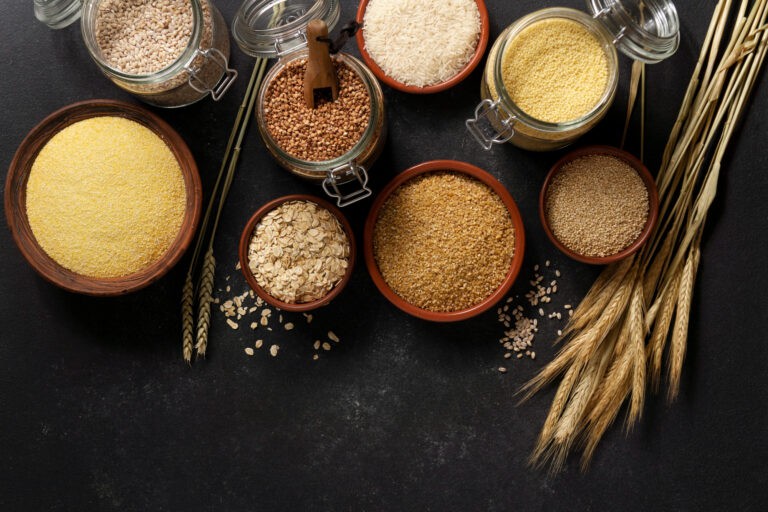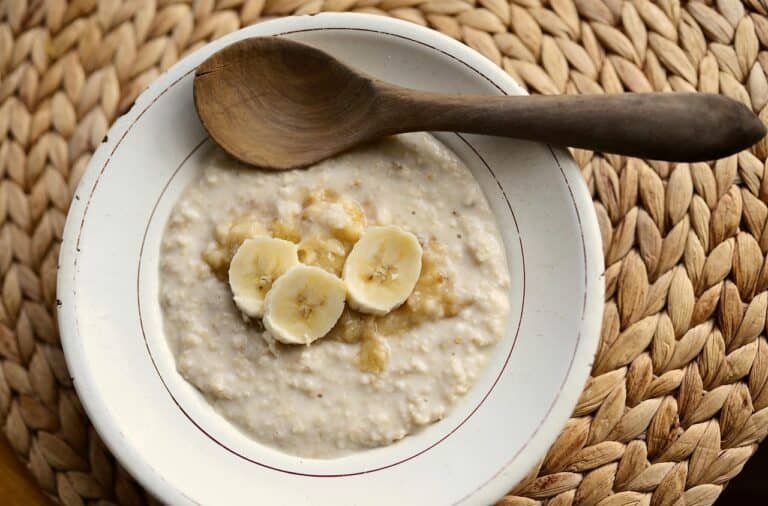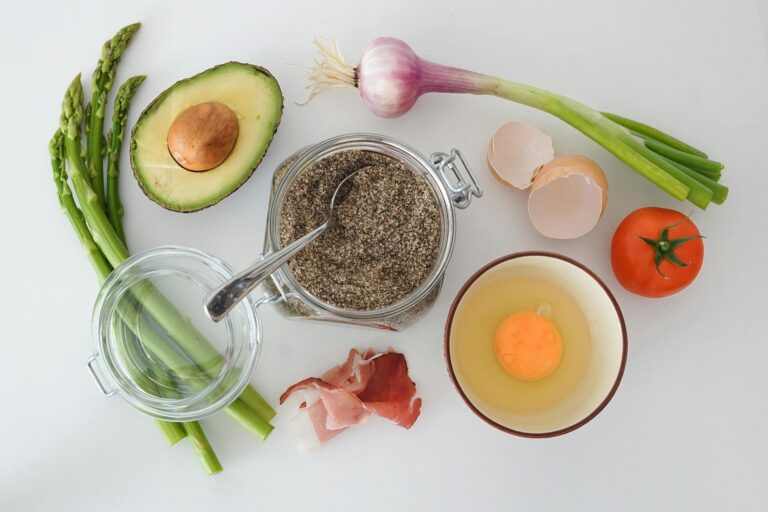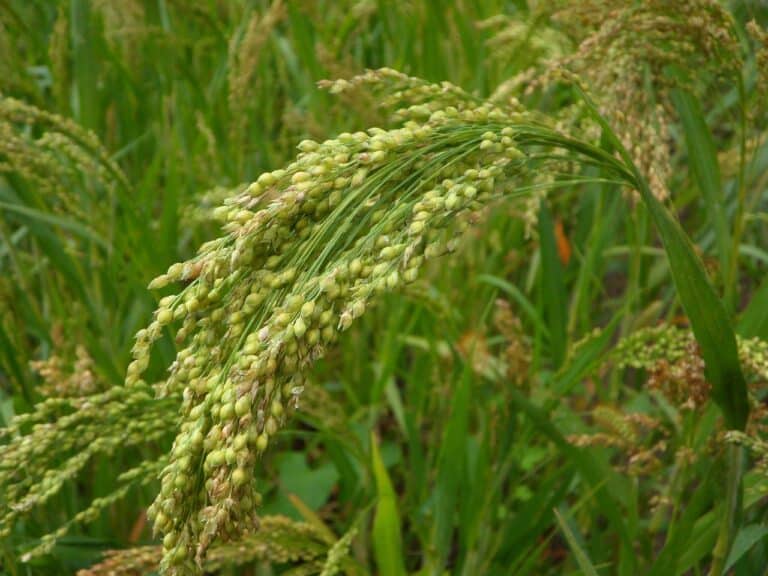If you’re trying to avoid gluten, you’ve probably wondered whether bajra is a safe choice. This traditional Indian grain has been a dietary staple for centuries—but is it really gluten-free? In this post, we’ll give you the straight answer and help you decide if bajra belongs in your gluten-free diet.
Bajra (pearl millet) is naturally gluten-free, making it a safe and nutritious choice for those with celiac disease or gluten sensitivity. It’s rich in fiber, iron, and essential minerals while being easy to digest. Whether in rotis, parathas or khichdi, bajra is a great gluten-free grain for everyday meals.
What is bajra?
Pearl millet (bajra) is the sixth most important cereal globally by area and production, and it stands out for its exceptional drought tolerance. In India, it’s the most widely cultivated millet and ranks just behind rice and wheat in popularity, especially in dry and arid regions. Bajra can be enjoyed as a whole grain or ground into bajra flour, both of which offer a rich source of fiber.
Nutrional Profile of bajra
Bajra has more niacin (vitamin B3) than any other cereal, and it’s also packed with protein and fiber. It is loaded with minerals like iron, zinc, potassium, and manganese—key nutrients your body needs to stay healthy. It also gives you B-complex vitamins and a boost of vitamin C, which together support a strong nervous system.
| Nutrients | Value per 100 grams |
| Energy (Kcal) | 347 |
| Protein (g) | 10.9 |
| Carbohydrate (g) | 61.8 |
| Fat (g) | 5.4 |
Learn more about millets and its types with detailed nutritional value.
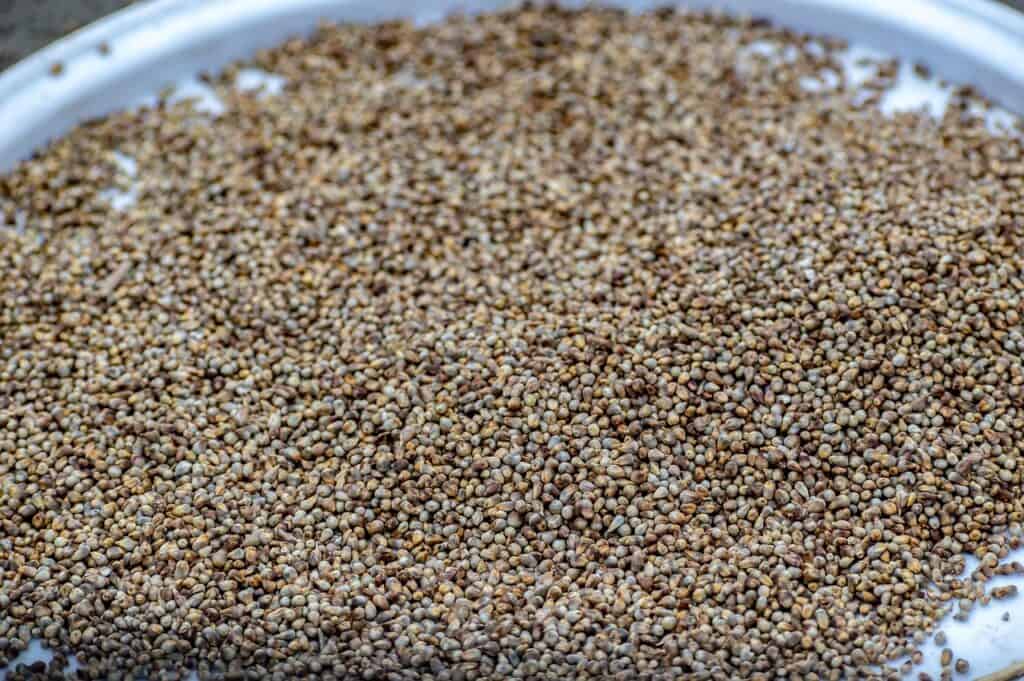
Benefits of bajra
- Supports Heart Health – Helps lower cholesterol and supports healthy blood pressure.
- Strengthens Bones – Rich in minerals like magnesium and phosphorus that aid bone development.
- Improves Digestion – High in dietary fiber, which supports gut health and regular bowel movements.
- Helps Manage Blood Sugar – Has a low glycemic index, making it ideal for steady energy release.
- Boosts Immunity – Packed with antioxidants that help your body fight off illness.
- Supports Muscle Function – Provides potassium and magnesium that help muscles work properly.
- Suitable for Gluten Sensitivity – Naturally gluten-free, so it’s safe for people avoiding wheat.
- May Aid Weight Loss – Its high fiber content keeps you full for longer.
- Good for Stomach Health – Known to be beneficial for managing stomach ulcers.
- Helps Nervous System Function – Offers B-vitamins that support brain and nerve health.
how to eat bajra?
1 bajra roti has 97 kcal calories , making it a healthy and filling option. Include bajra in your food as per your choice:
| Dish | How to Make It | Best For |
|---|---|---|
| Bajra Roti | Knead bajra flour with warm water, flatten by hand, and cook on a tawa | Lunch/Dinner |
| Bajra Khichdi | Cook bajra with moong dal, veggies, and spices for a hearty one-pot meal | Comfort food |
| Bajra Porridge | Boil bajra with milk/water; sweeten with jaggery or make savory with salt & spices | Kids/Seniors |
| Bajra Upma | Sauté mustard, curry leaves, onion + bajra + water; cook until fluffy | Breakfast |
| Bajra Dosa/Chilla | Make batter with bajra flour + curd/spices, pour thin and cook like dosa | Light meals/snacks |
| Bajra Pulao | Stir-fry spices and veggies, then cook soaked bajra with them | Main course |
| Bajra Ladoo | Roast flour in ghee, mix with jaggery and nuts, shape into balls | Festive/Snacks |
| Bajra Soup | Cook bajra with veggies and spices; blend for a creamy, nourishing soup | Winter meals |
| Bajra Tikkis/Cutlets | Mix cooked bajra with mashed veggies, shape and pan-fry | Evening snacks |
Bajra vs Ragi vs jowar: Which Millet Is Healthier
| Feature | Bajra (Pearl Millet) | Ragi (Finger Millet) | Foxtail Millet | Kodo Millet | Jowar (Sorghum) |
|---|---|---|---|---|---|
| Gluten-Free | Yes | Yes | Yes | Yes | Yes |
| GI (Glycemic Index) | Low to Medium | Low | Low | Low | Medium |
| Rich in | Iron, Fiber, Omega-3, Niacin | Calcium, Iron, Amino Acids | Iron, Protein, Fiber | Fiber, B vitamins | Iron, Protein, Antioxidants |
| Best For | Heart, Diabetes, Weight Loss | Bone Health, Anemia, Growth | Diabetes, Weight Management | Digestion, Detox | Energy, Anemia, Gluten Issues |
| Texture When Cooked | Slightly coarse, nutty | Soft, earthy | Soft-grainy | Fluffy, light | Mild, chewy |
| Not Ideal For | Hypothyroidism, allergies | Kidney stones (in excess) | None major | Hypothyroid (excess intake) | High oxalates (moderate use) |
what are the side effects of bajra?
Bajra May Cause Allergic Reactions
Bajra can contain natural proteins and compounds that may trigger allergic reactions like itching, swelling, or trouble breathing. If you’re trying it for the first time, start small. Watch how your body reacts. Always buy from trusted brands and check labels for allergen or gluten warnings. If you notice any symptoms, stop eating it and talk to your doctor.
Bajra May Cause Thyroid Problems
Bajra contains goitrogens, which are compounds that can interfere with thyroid function, especially if you have an existing thyroid condition. Over time, eating too much of it uncooked may slow down your metabolism or lead to weight gain. The good news? Cooking it well and eating it in moderation usually keeps things balanced. If you have thyroid issues, speak with your doctor before making it a regular part of your diet.
Frequently Asked Questions
is bajra good for diabetes?
Yes, it can be! Bajra (pearl millet) is a smart choice for people managing diabetes. It has a low glycemic index, which means it doesn’t spike your blood sugar quickly. Instead, it releases energy slowly, keeping you full and your sugar levels steady. Plus, it’s packed with fiber, which helps slow down how your body absorbs sugar and carbs. If you’re looking for a healthy grain swap, bajra is a great one to try.
can bajra be eaten during pregnancy?
Yes, bajra (pearl millet) is generally safe and beneficial during pregnancy. It’s packed with essential nutrients that support both the mother’s health and the baby’s development. Key Benefits of Bajra During Pregnancy:
- Iron-Rich: Helps prevent anemia, which is common in pregnancy.
- Folate Boost: Supports fetal brain and spine development.
- Fiber Content: Aids digestion and reduces constipation.
- Blood Sugar Control: Low glycemic index helps manage sugar levels and may reduce the risk of gestational diabetes.
Just make sure it’s well-cooked and consumed in moderation. If you have any specific medical conditions (like thyroid issues), consult your doctor before including it regularly.
can bajra be eaten in summer?
Yes, bajra (pearl millet) can be eaten in summer. Although it’s traditionally considered a “heaty” grain, you can enjoy it in summer by preparing it with cooling ingredients like buttermilk, curd, mint, or seasonal vegetables to balance its warming nature.
should we soak bajra before cooking?
Yes, soaking bajra is a good idea—especially if you’re using the whole grain. It helps soften the millet so it cooks faster and becomes easier to digest. Soaking also reduces something called phytic acid, which can block your body from absorbing certain nutrients. Just an hour of soaking can make a big difference.
Is Bajra and Jowar the same?
No, bajra and jowar are not the same. Bajra is pearl millet, and jowar is sorghum. Both are gluten-free millets, but they differ in taste, texture, and nutrient profile. Bajra tends to be heavier and warming for the body, while jowar is lighter and easier to digest during summer.
can bajra be eaten daily?
Yes, you can eat bajra regularly, especially during winter. It keeps you full for longer and helps with digestion. Just keep the portion balanced and rotate it with other grains for variety.
Is bajra good for weight loss?
It can help with weight loss because it’s high in fiber and keeps you full for longer. Bajra also has a low glycemic index, so it won’t spike your blood sugar like white rice or refined flour.
Is bajra better than wheat?
Bajra and wheat have different strengths. Bajra has more fiber and is gluten-free, making it better for digestion and some health conditions. Wheat, on the other hand, is easier to handle for making fluffy chapatis. You can rotate between both or even mix the flours.
can bajra be eaten by diabetics?
Yes. Bajra is considered safe and even helpful for people with diabetes. Its low glycemic index helps regulate blood sugar levels, and the high fiber content slows sugar absorption.
can bajra cause gas or bloating?
It can, especially if you’re not used to eating high-fiber foods. Soaking, cooking it properly, and starting with small portions can help avoid discomfort. Also, pair it with spices like cumin or ajwain to aid digestion.
Is bajra good for thyroid patients?
If you have thyroid issues, especially hypothyroidism, it’s best to eat bajra in moderation. Bajra contains goitrogens that may interfere with thyroid hormones. Cooking it thoroughly and not overdoing the quantity is key.
Can I give bajra to kids?
Yes! Bajra is nutritious and can be a part of a child’s diet once they’re ready for solid foods. Start with soft porridges or rotis. Make sure it’s well-cooked and easy to chew.
Is bajra heat or cold for the body?
Bajra is considered a warming food in Ayurveda. That’s why it’s especially popular during winter. If you’re eating it in summer, keep portions small or pair it with cooling foods like curd or buttermilk.
Can I mix bajra with other flours?
Absolutely. You can mix bajra with wheat, jowar, or ragi flour to balance taste and texture. It makes rotis easier to roll and gives you a blend of nutrients. Read more about ragi or kodo millet.
Can I eat bajra if I have PCOS?
Yes, bajra can be helpful for PCOS. Its low glycemic index helps manage insulin levels, and the high fiber supports hormone balance. Just make sure your overall diet is balanced.
final thoughts
Bajra is a versatile, gluten-free millet packed with nutrients and health benefits. Whether you’re managing blood sugar or seeking a wholesome grain alternative, bajra is a smart, traditional choice.

